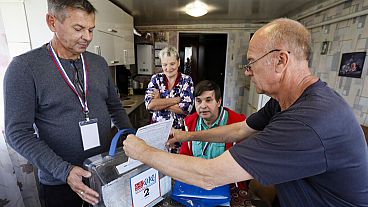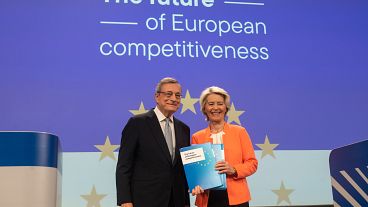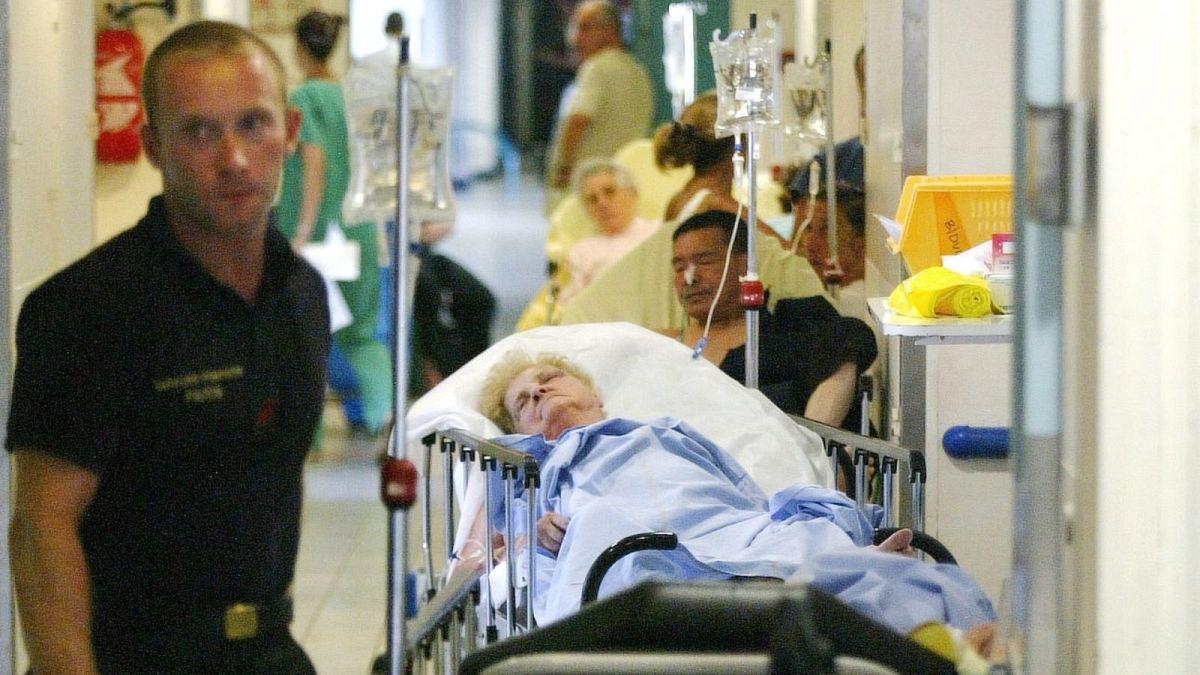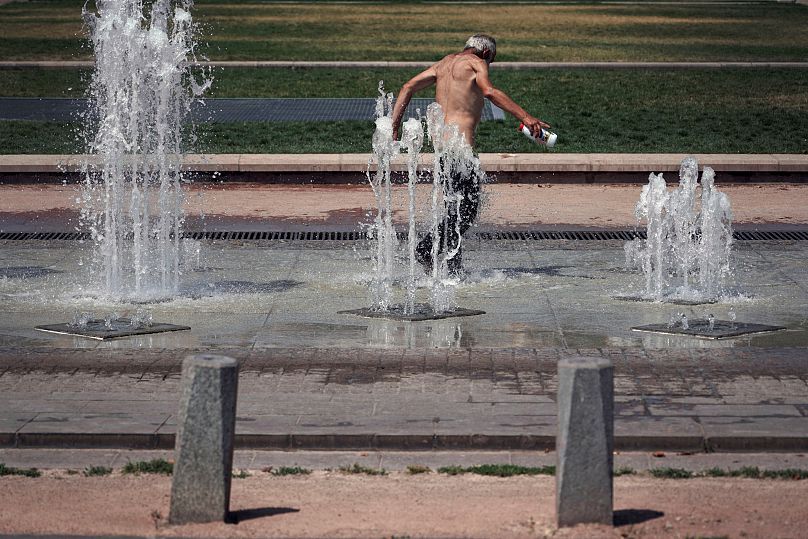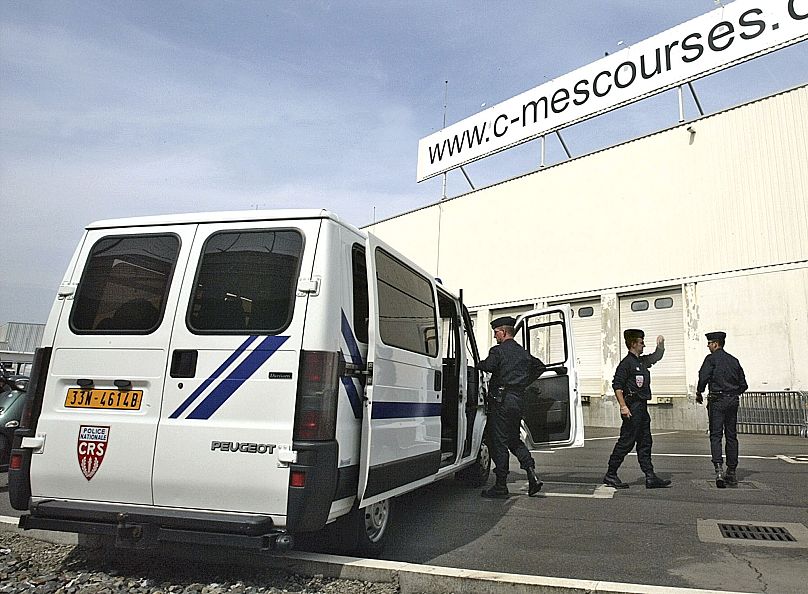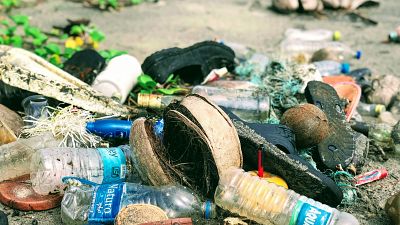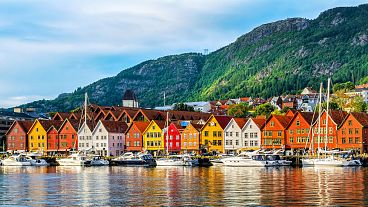Intensifying heatwaves pose important questions to society, says public health expert Mathilde Pascal.
In August 2003, a major tragedy struck France: heat. 14,802 people were killed by the hot, dry air that smothered the country for a fortnight, most of them elderly, many of them dying alone.
“For me, 2003, it's really like something that comes from the future and says you must get ready because I'm going to come back,” says Mathilde Pascal, scientific project manager at Santé Publique France.
At the time, France was caught unawares, unused to perceiving heat as a killer. As the mercury crept up to 37C, newspapers portrayed it as fun in the sun, while the health minister gave a reassuring TV address from his holiday home on the Riviera.
Fast forward two weeks and the nation was in a state of shock over what had happened on their doorsteps. Morgues overflowed. When city-dwellers returned from their holidays at the end of August, some found their ceilings stained by the bodily fluids of elderly neighbours who had died a lonely death. “2003 was an electric shock,” as Pascal puts it.
The health crisis rapidly became a political and social one, she recalls. A parliamentary inquiry published in February 2004 identified multiple failings, and that summer France launched its first national heatwave plan.
More than 20 years on, the events of summer 2003 still loom large for those in power. “At least in terms of decision making, risk analysis and communication, I think the progress we made between 2003 and now is enormous,” says Pascal.
Under the country’s national heatwave plan, a warning system categorises the threat from green to red every summer - with very strong measures at the danger end. National weather service Météo France, Santé Publique France and the Ministry of Health monitor temperatures and discuss the situation on a daily basis.
What did France learn from the 2003 heatwave?
Around 82 per cent of the 2003 victims were 75 or older, statistics show. Of those in Paris who died at home, 92 per cent were estimated to have lived alone.
These horrifying scenes permeated the national consciousness, and accelerated action. But 20 years is a long time in collective memory, and Pascal thinks French awareness about extreme heat is now largely down to annual events and efforts.
Subway posters, TV ads and radio announcements keep people alert to the danger and inform them of the latest guidance.
Under the national heatwave warning system, each colour activates a particular plan, with departments are on an emergency footing from the orange level (meaning heatwave).
It varies across the country, but this is typically declared when temperatures pass a certain degree for three consecutive days. At this point, for example, cities open designated cooling spaces, and step up checks on people sleeping rough.
At level red (severe heatwave) the national government gets involved too. Local authorities are given special powers to shut down events and public facilities if needs be.
In summer 2019, France baked under record-breaking temperatures: 46C near the southern city of Nîmes, and nearly 43C in Paris.
A rare red warning was issued for a couple of days. The national exam for students heading to high school - something “symbolically important” in France - was postponed, and people were advised not to go to work or use public transport.
“It was like just shutting down the whole way of daily life, because of the heat,” she says.
Has France’s heatwave plan saved lives?
Given the complex relationship between heat and mortality, it’s hard to quantify exactly how many people’s lives have been saved by French heat policies.
One study estimated that around 4,000 more people may have died in a July 2006 heatwave that killed 2,000 had it not been for the national heatwave plan.
Another study includes a figure on heat-related deaths during 2015-2019, with southern France looking less vulnerable next to comparable locations in northern Spain and Italy.
Lead author Joan Ballester at the Barcelona Institute for Global Health (ISGlobal) speculates that, “there’s something in the way France is doing things” that softens the impact of extreme heat. He names the health system, socioeconomic circumstances and the long shadow of 2003 as possible factors.
Pascal cautions that this is still a narrow time frame; it could simply be that temperatures were less intense in France during these four years. Comparing countries is another complicated field.
In a controlled study, France would be visited by the same heatwave every year, and researchers could assess the impact of different preventive measures. But heatwaves naturally vary, and they have been getting increasingly intense with climate change.
“It's like the enemy that we face is getting stronger every year,” says Pascal. “And I’m not sure that we are getting stronger every year also.”
In the summer of 2022 - France’s second-hottest season and hottest year on record - heat-related deaths were estimated at around 4,800. Two red alerts were declared that year, and vulnerable lives undoubtedly saved. But the death toll shows the limits of adaptation.
How far can emergency heat measures go?
Similar to COVID-19 lockdowns, heatwaves raise important questions about what citizens are prepared to do to protect each other.
“We must also ask ourselves if we are ready as a society to take these [red] kinds of measures every summer - maybe not for one day, but for two weeks,” says Pascal.
“Because exceptional extreme heat events - I don't even know what type of adjectives we need to use today - are repeating themselves very frequently.”
Reducing heat mortality risk is one part of the equation, she says. “The second part is, at what cost are we able to limit the risk and the impact? And is this cost going to be sustainable and acceptable?
“And of course, the answer to that is no. And the answer is we really need to mitigate climate change.”
From short term relief to long term heat adaptation
In France, the red threshold is kept high to make it effective. In parallel to emergency measures, the plan was always to develop long-term adaptation strategies too.
This was initially focused on training people to take care of each other during heatwaves. Since 2004, all nursing homes must have one room with air conditioning to protect residents. Local councils encourage over 65s and vulnerable people to register for phone check-ins when hot temperatures strike.
In recent years, adaptation has expanded in other directions - tackling the urban heat island effect, for example, with tree planting schemes.
In 2023, France unveiled its first heatwave management plan, embedding more structural solutions. And - a significant development for Pascal - heatwave plans are now shared by the Environment as well as the Health Ministry, with ‘adaptation’ to the fore.
2024 has brought more specific guidance - on outdoor sports, for example, under the banner ‘live with heat’. “It’s really a new paradigm,” Pascal explains; rather than telling people not to exercise, they are given options like running at different times or trying different activities.
How could France manage heat better?
Another focus point for Santé Publique France is indoor temperatures, with health experts starting to discuss with building professionals how to make homes cooler and safer for people.
“I think it would be useful to have a collective discussion and consensus on what is sustainable and fair use of air conditioning,” Pascal says, although that’s not specific to France.
Having analysed the data, she believes the country’s heat prevention plan has been effective at reducing deaths, but it’s not avoiding all the impacts - and there’s still room for improvement.
Some actions are compulsory and others work like a “toolbox” which local authorities can choose from. Pascal envisages a tighter network, where local people could share experiences and good practice.
“I think maybe the only thing that we are still missing today is the understanding of the gravity of the events that we will face if we don't act on climate change,” she adds.
“Because I feel that there is this kind of idea that, okay, extreme is a big problem but we will find a way to adapt and we will find a way to be fine. And there is a limit to adaptation.”
Without tackling fossil fuel-driven climate change at source, the lethal heatwave of 2003 will be much lighter than what Europeans will experience in the future.


